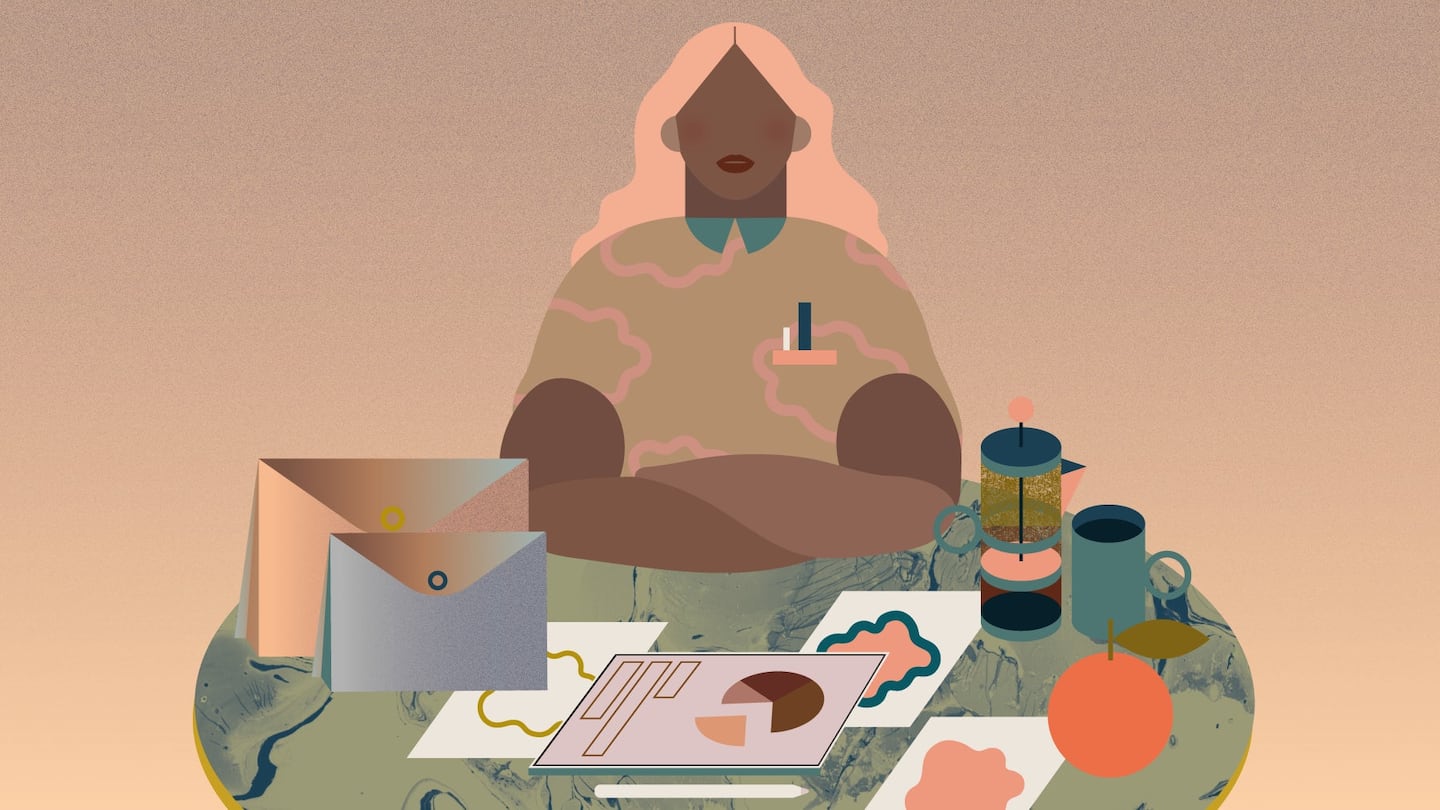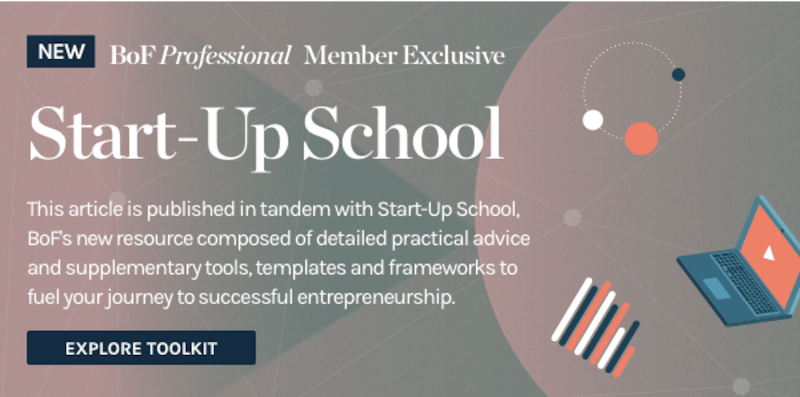
The Business of Fashion
Agenda-setting intelligence, analysis and advice for the global fashion community.

Agenda-setting intelligence, analysis and advice for the global fashion community.

This article is published in tandem with Start-Up School, BoF’s new resource comprised of a practical guide and supplementary tools, templates and frameworks to fuel your journey to successful entrepreneurship. Become a member to access.
“I didn’t invent lipstick, but I reinvented it,” said Bobbi Brown. The founder of global beauty brand Bobbi Brown Cosmetics started with a simple goal: to give women an easier way to create a more natural makeup look. She launched in the early 1990s with a line of just 10 lipsticks that actually looked lip-coloured, and she touched a nerve.
After some initial sales via word of mouth, Brown secured her first wholesale account, launching Bobbi Brown Essentials in 10 shades at Bergdorf Goodman in 1991. She expected to sell 100 lipsticks in the first month. She reached that target on the first day.
She sold her company to Estée Lauder Companies in 1995, where she stayed on for nearly 25 years as chief creative officer. The success of her natural-look products turned her business into one of the beauty conglomerate’s billion-dollar brands, sold in more than 50 countries.
ADVERTISEMENT
But what is the magic formula for the perfect idea, and how do you turn that idea into a thriving business?
Here’s how to get started:
Find Your Niche
Everything starts with a compelling product. To stand out, entrepreneurs must come up with an idea that solves a problem in a way that’s new and exciting — so much so that customers will pay for it.
I didn't invent lipstick, but I reinvented it.
Working as a makeup artist in New York in the eighties, Bobbi Brown knew women were craving an easier, more modern way to create a natural makeup look, but there weren’t many products on the market meeting that demand. She set out to create a product that felt comfortable to wear — unlike most lipsticks at the time, which tended to either feel greasy or dry, and “smelled like my mother’s lipstick,” Brown said.
For many founders, inspiration comes from personal frustrations and problems, both practical and aesthetic. For instance, as a professional football player in New Zealand, the co-founder of sneaker start-up Allbirds, Tim Brown, used to get inundated with free shoes, but he struggled to find a simple sneaker.
“That problem was mine before I researched and understood there were maybe others, and set out on a quest,” he said.
Cult Danish outerwear label, Saks Potts, came about because childhood friends Cathrine Saks and Barbara Potts couldn’t find a fur coat on the market that suited their budget and style.
ADVERTISEMENT
“We basically started out making what we and our friends wanted to wear ourselves,” said Saks. Now, their brightly coloured, fur-trimmed coats have become a viral fixture at fashion weeks around the world and are stocked at Net-a-Porter, Bergdorf Goodman, Boon the Shop and MatchesFashion, among others.
Define Your Strategy
A great idea is an important first step, but it’s the business model that will turn that concept into a real company. That means nailing down how to manufacture a product so it can be sold at a competitive price, where it will be stocked, as well as the brand identity (and accompanying marketing strategy) that will attract customers.
We basically started out making what we and our friends wanted to wear ourselves.
Before getting started, founders need to consider technical and logistical details like production location, cost and time, and solutions for shipping and storing goods. There are longer-term considerations too, like whether to focus on a single product to begin with, or have a constant cycle of new material in development, and how to distinguish the business from any competitors.
When Nicolaj and Ditte Reffstrup took over fledgling Danish label Ganni in 2009, they didn’t write a formal business plan, but they did set a clear objective: to create a steadily growing and profitable womenswear brand that targeted an international, advanced contemporary market. The company set an annual growth target of at least 30 percent and decided on the price point and wholesalers they wanted to target based on the brand identity they wanted to create.
“We had this vision that was pretty boring, but very precise and you could break it down into quantifiable objectives,” Reffstrup said. “It made it very operational, which is something you sometimes struggle with [when] building a brand. We were very disciplined around these criteria.”
The founders of Swedish label Asket played around with their concept of a line of well-fitted men’s essentials for years before launching in 2015. Their original sales pitch, rolled out in a Kickstarter campaign, promised a premium fitted T-shirt at a reasonable price, which would be accomplished by keeping costs down behind the scenes. The company deals directly with suppliers, sells online instead of in stores, and keeps advertising to a minimum.
At the same time, founders shouldn’t see their initial blueprint as set in stone. Often, a start-up’s biggest advantage is its ability to act nimbly and shift focus if customer feedback reveals a better path, or if something isn’t working.
ADVERTISEMENT
Nail Your Story
By some estimates there are thousands of fashion and beauty brands competing for consumers’ attention. In a world saturated with product, companies can’t wait until they have a marketing team in place to explain their story. The narrative around the brand needs to be powerful, and front and centre from the very beginning.
The traditional way of launching brands won't work anymore, especially if you don't have a multi-million pound budget.
“You need to consider why you are doing what you are doing,” said Asket co-founder August Bard Bringéus. Without that, “chances are you aren’t going to make it very far because it’s so easy to start a brand and there’s a plethora of alternatives out there.” The Swedish brand found that its message of timeless, ethical and sustainable pieces resonated with customers.
Having a compelling narrative in place can also prove to be a powerful tool in building a brand’s profile, helping to keep marketing costs down. The beauty brand Drunk Elephant, which is reportedly exploring a sale that could fetch $1 billion, has never paid for advertising, relying on its eye-catching neon packaging and “clean skincare” branding to draw customers.
Perfect Your Product
It doesn’t matter how good a company’s game plan or story is if consumers don’t like what you’re making. A shoddy product can torpedo a start-up from the beginning, but so can a strong product sold for too high a price.
Fashion designers are often tempted to launch with a full collection, but attempting to juggle a massive creative challenge while setting up a full supply chain can be a recipe for logistical complexity and cash flow problems.
In recent years, more and more new fashion brands have focused their resources and attention on a single hero product at the beginning. Starting with a limited range simplifies the task of lining up manufacturers that will produce designs at competitive prices. The cheapest factories generally require significant minimum orders, well beyond the needs of a typical start-up. That forces many fledgling brands to choose between selling their product at premium prices or taking a loss on early runs.
Production constraints were the main reason Nicole Najafi started Industry Standard as a denim brand with just four styles.
Founders shouldn't see their initial blueprint as set in stone ... A start-up's biggest advantage is its ability to act nimbly.
“That was all I could afford… you have to pay to develop a style, you have to pay to produce it,” said Najafi, who launched using $10,000 she had in savings. “And then it turned out customers really liked the limited selection.”
Pick Your Distribution Channel
Before the rise of e-commerce, designers had one main route to success: build a collection and look for wholesalers to stock it. That’s still the preferred method for some new brands, but it’s also the slowest and can be the least profitable.
Many start-ups begin selling on their own website first, and use that early momentum to pitch department stores and online multi-brand retailers like Net-a-Porter. Some like Allbirds, Glossier and other buzzy brands, avoid wholesalers entirely.
“The traditional way of launching brands won’t work anymore, especially if you don’t have a multi-million pound budget,” said Ada Zhao, who launched Curated Crowd, an e-commerce site featuring small brands with limited-edition products. “I always advise instead of the wholesale route, perhaps it’s wiser to go down the direct-to-consumer route first.”
Just because a retail opportunity comes along doesn’t mean it’s the right fit for the brand.
Ganni has twice sacrificed sales to make sure its clothes are only stocked at retailers that align with the brand’s values.
For instance, it dropped 100 wholesale accounts in 2017, including an online player that made up around 10 percent of total sales largely because the company couldn’t control how the brand was positioned on the platform.
“We made major, bold decisions based on [our] vision,” Reffstrup said.
Related Articles:
[ Chapter 2: Fund Your Business for GrowthOpens in new window ]
[ Chapter 3: Find Product-Market FitOpens in new window ]
[ Chapter 4: Identify Your Target CustomerOpens in new window ]
[ Chapter 5: Build Your Culture as You GrowOpens in new window ]
[ Chapter 6: Scale Your Business CarefullyOpens in new window ]
[ Chapter 7: Plan Your Exit StrategyOpens in new window ]

The Los Angeles-based accessories label has been a well-kept secret in the industry, but founders Yang Pei and Stephanie Li are hoping to change that through new acquisitions, opening brick-and-mortar stores and using AI to speed up the design and production process.
Designer Carly Mark sparked conversation about what it takes to make it as an emerging designer in New York when she announced she was shutting her ready-to-wear line and moving to London. On Thursday she held her last sample sale.
To stabilise their businesses brands are honing in on what their particular consumer wants to buy, introducing new categories and starting conversations.
That’s the promise of Zellerfeld, a 3D-printing partner to Louis Vuitton and Moncler that’s becoming a platform for emerging designers to easily make and sell footwear of their own.